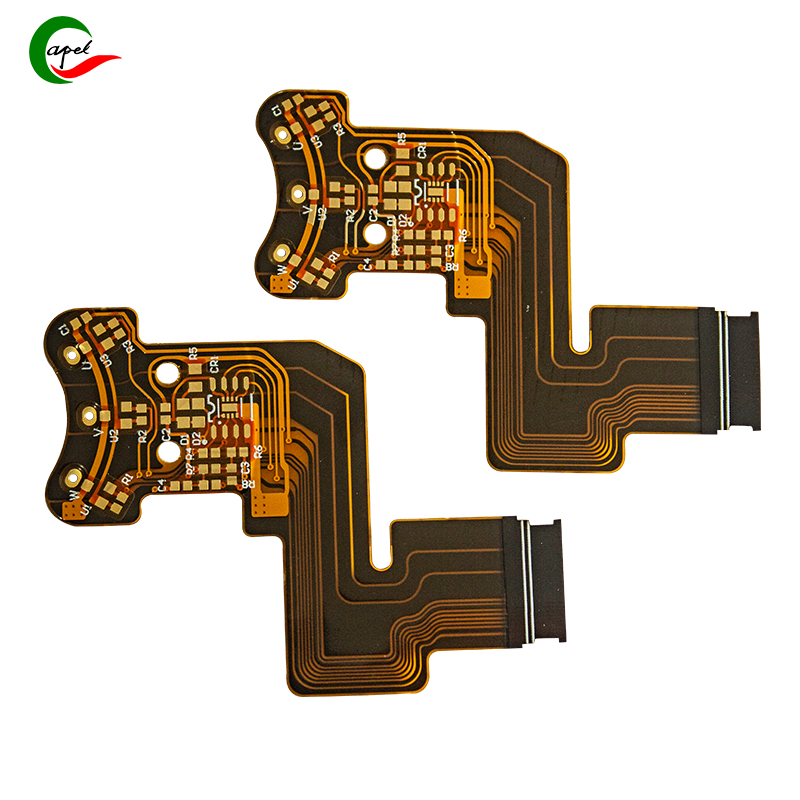As a skilled rigid-flex PCB engineer with extensive experience in the electronic door lock industry, I have always been committed to providing innovative solutions to meet the ever-changing needs of our customer base. Throughout my career, I have encountered many industry-specific challenges and successfully solved them by leveraging enhanced rigid-flex PCB solutions. In this article, we’ll explore the key role these solutions play in powering smart door locks and delve into successful case studies that highlight their efficacy in the new energy sector.
Enhanced rigid-flex PCB solution introduction
The continued development of smart door locks in the era of digital transformation brings unique challenges that require complex technical solutions. Against this background, enhanced rigid-flex PCB solutions have become a disruptive enabler for seamless integration of advanced functions in smart door lock systems. By combining the flexibility of flexible PCBs with the durability of rigid PCBs, these solutions offer unprecedented design flexibility, space optimization and reliable performance, making them ideal for meeting the complex requirements of modern smart door locks.
Overcoming industry-specific challenges in the new energy sector
The new energy sector faces a unique set of challenges, particularly when it comes to energy efficiency, sustainability and the seamless integration of smart technologies. For customers operating in this dynamic industry, demand for smart door locks that comply with energy-saving and environmentally friendly principles is rising. This requires the development of customized innovative solutions to meet these specific requirements and enhanced rigid-flex PCBs have proven to help facilitate these goals.
Case study 1: Energy-saving digital door lock pcb integration
Our client, a leading smart home solutions provider, sought to develop a range of digital door locks with a focus on energy efficiency and seamless integration with renewable energy sources. Utilizing enhanced rigid-flex PCB solutions, we worked with customers to design PCB layouts that optimized power distribution, minimized energy consumption, and facilitated the integration of solar panel inputs to provide supplemental power. The resulting smart door lock not only meets strict energy efficiency standards, but also integrates seamlessly with customers’ broader focus on sustainable smart home solutions.
Case Study 2: Bluetooth Security Lock pcb for Smart Grid Integration
Another notable case involves a customer in the smart energy grid space who specifically needed a Bluetooth-enabled security lock that could integrate seamlessly with their existing network infrastructure. By leveraging enhanced rigid-flex PCB solutions, we develop custom PCB designs that enable seamless integration of Bluetooth connectivity, strong security protocols, and compatibility with customers’ smart energy grid ecosystems. The enhanced rigid-flex PCB design not only facilitates communication and synchronization of the smart lock with the power grid, but also enables real-time monitoring and remote access control, enhancing the overall security and operational efficiency of the customer’s infrastructure.
Case study 3: Fingerprint door locks pcb for sustainable residential communities
In a different context, a client focused on the development of sustainable residential communities sought to implement an advanced fingerprint door lock to align with their commitment to an environmentally friendly and energy-efficient living environment. Enhanced rigid-flex PCB solutions play a key role in this effort, enabling the development of fingerprint door locks with minimal power consumption, biometric capabilities, and seamless integration with customers’ overall sustainability plans. The resulting smart lock not only provides unparalleled security through biometric authentication but also helps improve the overall energy efficiency and sustainability of the residential communities in which it is deployed.
Conclusion: Maximizing the potential of enhanced rigid-flex PCB solutions
As the above case studies demonstrate, the application of enhanced rigid-flex PCB solutions helps customers in the new energy sector overcome industry-specific challenges. By leveraging the multifunctional capabilities of these innovative PCB solutions, smart door lock systems have been taken to new levels of energy efficiency, sustainability, and seamless integration in different smart technology ecosystems. Looking forward, the relentless pursuit of further innovation and customization in the field of enhanced rigid-flex PCB solutions will continue to drive the advancement of smart door locks, enabling customers to thrive in the era of sustainable, energy-saving smart technology.
Post time: Dec-20-2023
Back







